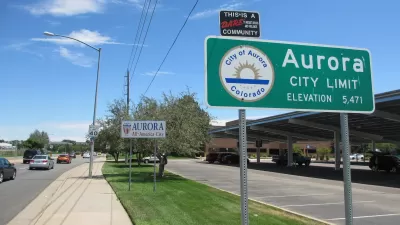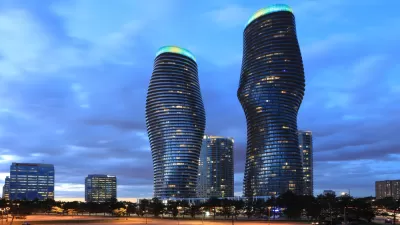As our suburbs diversify, the most affordable commercial districts found in such areas (often in strip malls) become an important entry point for immigrants to build their 'American Dream'. Kaid Benfield asks if such opportunities deserve protection.
"There is little question that suburban strip malls represent an unsustainable architecture," writes Benfield. "Totally automobile-dependent, marked by large surface parking lots, and remarkably inefficient at using land, strip malls generate much more pollution and consume much more in the way of resources on a per capita basis than do more walkable, urban shopping districts. Such urbanist thinkers as Galina Tachieva (Sprawl Repair Manual), June Williamson and Ellen Dunham-Jones (Retrofitting Suburbia) are absolutely correct in urging that, as these malls age and decline, they should be replaced with better, greener forms."
"And yet: As these properties have declined, so have their rents, making them affordable to small, often entrepreneurial businesses. Particularly as immigrants have settled in inner suburbs (where many of these fading commercial strips are), businesses owned and patronized by the immigrant population have occupied many of these spaces, in some cases alongside small start-ups owned by longtime community residents as well."
Planners have recognized the adverse impacts of redevelopment on affordable housing and responded with inclusionary zoning laws to help prevent displacement. "But, as far as I know," adds Benfield, "there is no comparable, widely understood ethic to protect small, often minority businesses that are harmed by otherwise beneficial neighborhood change, and I am wondering whether there should be."
FULL STORY: As we remake suburbs, should we guard against "commercial gentrification"?

Planetizen Federal Action Tracker
A weekly monitor of how Trump’s orders and actions are impacting planners and planning in America.

Maui's Vacation Rental Debate Turns Ugly
Verbal attacks, misinformation campaigns and fistfights plague a high-stakes debate to convert thousands of vacation rentals into long-term housing.

San Francisco Suspends Traffic Calming Amidst Record Deaths
Citing “a challenging fiscal landscape,” the city will cease the program on the heels of 42 traffic deaths, including 24 pedestrians.

Amtrak Rolls Out New Orleans to Alabama “Mardi Gras” Train
The new service will operate morning and evening departures between Mobile and New Orleans.

The Subversive Car-Free Guide to Trump's Great American Road Trip
Car-free ways to access Chicagoland’s best tourist attractions.

San Antonio and Austin are Fusing Into one Massive Megaregion
The region spanning the two central Texas cities is growing fast, posing challenges for local infrastructure and water supplies.
Urban Design for Planners 1: Software Tools
This six-course series explores essential urban design concepts using open source software and equips planners with the tools they need to participate fully in the urban design process.
Planning for Universal Design
Learn the tools for implementing Universal Design in planning regulations.
Heyer Gruel & Associates PA
JM Goldson LLC
Custer County Colorado
City of Camden Redevelopment Agency
City of Astoria
Transportation Research & Education Center (TREC) at Portland State University
Jefferson Parish Government
Camden Redevelopment Agency
City of Claremont




























